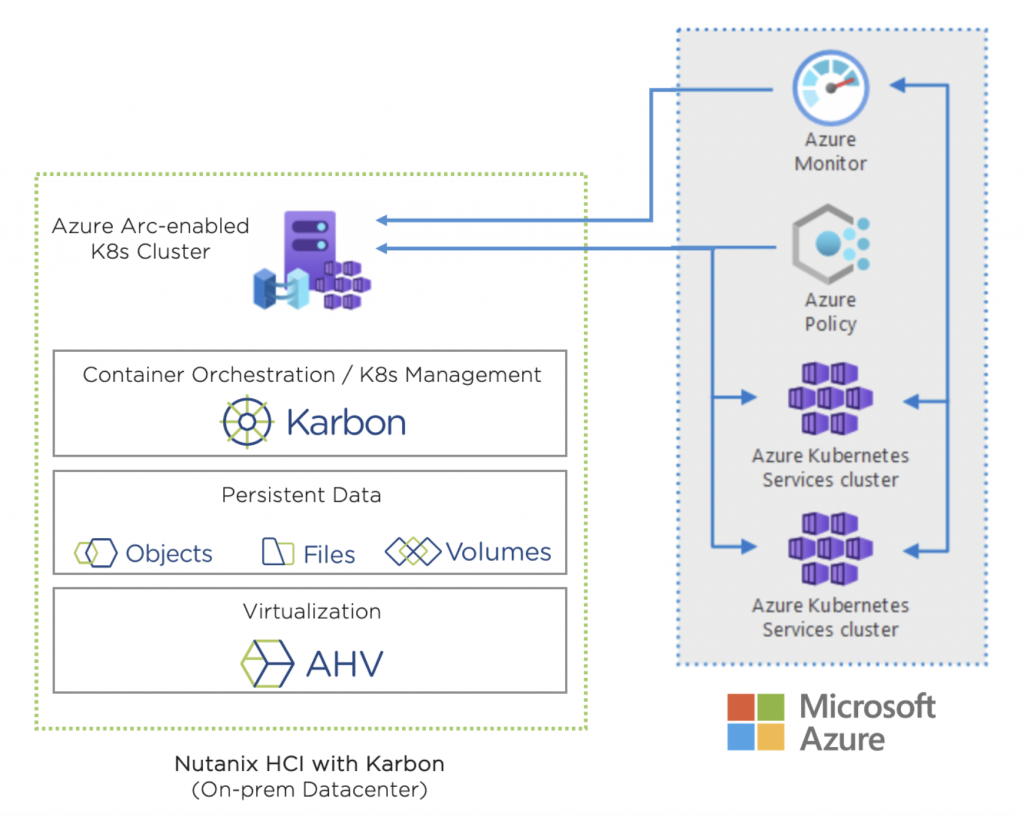Nutanix Karbon Now Integrates With Microsoft Arc
The Karbon distribution of Kubernetes made available by Nutanix has now been integrated with Microsoft Arc management framework.
The number of Kubernetes distributions that support Microsoft Arc is expected to steadily increase now that Microsoft Arc is generally available. Microsoft is positioning Arc as the control plane through which it enables heterogeneous hybrid cloud computing.
Greg Muscarella, vice president of product for Nutanix, says Karbon was created to enable IT teams to spin up a Kubernetes cluster in under 10 minutes on top of a hyperconverged infrastructure (HCI) platform to provide a cloud-like experience. That approach makes it simpler for IT teams to deploy microservices-based applications based on containers on a platform they already know how to manage alongside existing monolithic applications, Muscarella notes.
Azure Arc, which is designed to support any distribution of Kubernetes, has emerged as the primary mechanism through which Microsoft will extend its reach beyond platforms running the complete stack of Azure software. It creates a managed identity for each Kubernetes cluster within the Azure Portal by assigning an Azure Resource Manager ID. Kubernetes clusters can then be attached to standard Azure subscriptions, participate in a resource groups and be assigned tags like any other Azure resource.
Connecting a Kubernetes cluster to Azure requires an administrator to deploy agents, which run in a Kubernetes namespace dubbed azure-arc. Those agents not only connect a Kubernetes cluster to Azure Arc, but also collect logs and metrics in addition to monitoring configuration requests. IT teams can also apply policies to any Kubernetes distribution using the Azure Policy for Kubernetes service.
Much like Google, IBM and VMware, Microsoft views Kubernetes as a way to establish Azure and Arc as, essentially, the hub around which an organization can develop a hybrid cloud computing strategy. Making that case in a convincing manner, however, requires Microsoft to establish alliances with Kubernetes distribution providers that are employed in on-premises IT environments.
As adoption of Kubernetes steadily increases, the number of IT organizations that will revisit their cloud computing strategies will also grow. Most organizations today manage multiple clouds and on-premises IT environments in isolation from one another. As Kubernetes is deployed on each of those platforms, however, there’s a great opportunity to centralize management of all those platforms. Interest in achieving that goal has increased in the wake of the economic downturn brought on by the COVID-19 pandemic, and is driving more IT organizations to find ways to reduce the total cost of IT by eliminating the need for platform management specialists.
It’s too early to say which of the major IT providers is likely to emerge as the dominant provider of the control plane that will enable those centralization goals to be achieved. At this point, however, the centralization of management of what is becoming an overly extended enterprise IT environment is now more a question of when, rather than if, for most IT teams.





